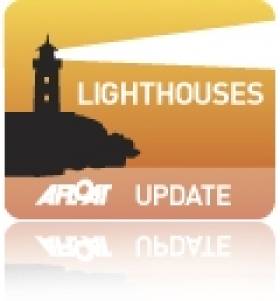Displaying items by tag: lighthouse
Lighthouse Lecture by Kilmacanogue History Society
#LIGHTHOUSES- Kilmacanogue History Society is to host a lecture on 'Irish Lighthouses' which will be presented by John Donnelly and Brian Maguire. They will provide a personal insight into the work needed to keep Ireland's Lighthouses operating in the past.
For near on forty years they, with their colleagues, have managed the upkeep of our lighthouses in a time when many were becoming automated.
During the presentation they will regale with tales, some amusing, others amazing, of their work experiences. In addition there will be unique slides of old lighthouses as well as stunning pictures of many of the existing network.
No true lover of our seas will want to miss this one! The Lighthouse talk takes place at 8.30pm on Tuesday 6th December in The Glenview Hotel, Glen of the Downs, Co. Wicklow.
An entry fee of €3 or (€2 for members)– all welcome. To read more about the Kilmacanogue History Society click here
Stranraer-Belfast Ferry Left Adrift Off Scottish Coast
The Press Association reports that the Stena Navigator was en route from Stranraer to Belfast when both of its engines broke down.
The ferry - carrying 70 passengers and 47 crew - was adrift some four nautical miles west of Corsewall Point lighthouse at the Mull of Galloway.
Clyde Coastguard confirmed that two Svitzer tugs, Norton Cross and Willowgarth, were dispatched to the vessel with the aim of towing it to Belfast, but the ferry managed to get one enging going and propelled itself at half power across the North Channel.
The Navigator arrived in port accompanied by the tugs around 4:30am. No injuries were reported in the incident.
Wexford Lighthouse Could Be a Dream Home
A private lighthouse overlooking Waterford Harbour will be up for auction in June valued at €345,000.
The Duncannon north lighthouse - some 20km from New Ross, Co Wexford - is thought to be one of the only privately-owned lighthouses still operating in Ireland, according to The Irish Times.
The protected building was restored into use some years ago, and receives an annual rent of €2,500 from the Port of Waterford as a backup lighthouse.
The living quarters comprise two living rooms, a kitchen with "a rustic, cottagey feel", a study with a bay view, a bathroom with bath and shower, and three bedrooms (including two doubles).
Some work may be required by prospective owners - low ceilings in the double bedrooms could be raised "significantly", the main rooms may need a new lick of paint, and the sloping garden is unwalled at the cliff edge.
But the property, which also includes a number of outhouses, has all the potential to be a quirky dream home.
The Duncannon north lighthouse will go under the hammer on 17 June 2011, with New Ross agency PN O’Gorman quoting an AMV of €350,000.
Moth Dinghy Debuts on Dublin Bay
Since our report on Ireland's debut at the Moth worlds in January it was inevitable that one of these high speed sailing dinghies would appear on Irish waters soon enough. Yesterday, John Chambers took his first tack of 2011 on Dublin Bay in a Moth he bought in France. Clearly the high speed foiling craft did not go unnoticed. It got an immediate thumbs up from the nearby DMYC frostbite fleet sailing their penultimate race.
The Bladerider Moth came blasting back from the Baily lighthouse, according to eyewitness accounts. It has hydrofoils on the dagger board and rudder which lift the boat out of the water when sufficient speed is achieved.
It is Chamber's intention to sail the innovative dinghy in this Summer's Dublin Bay Sailing Club (DBSC) summer season.
Video of the Dublin Bay sail plus a photo from Bob Hobby is below:

Moth sailing on Dublin bay. Photo: Bob Hobby
Moth sailing in Ireland on facebook HERE




























































